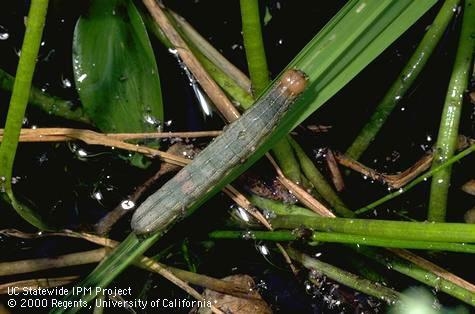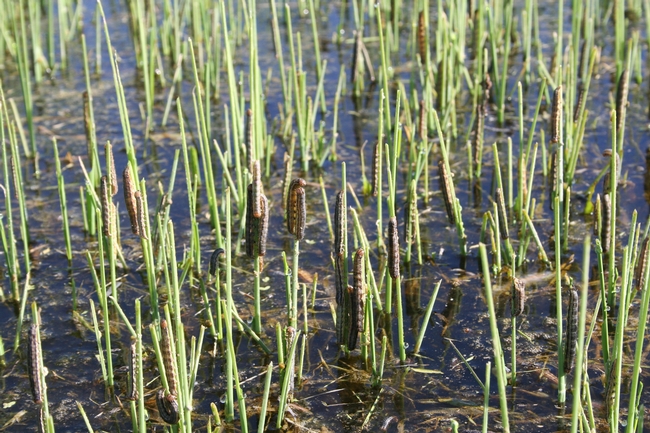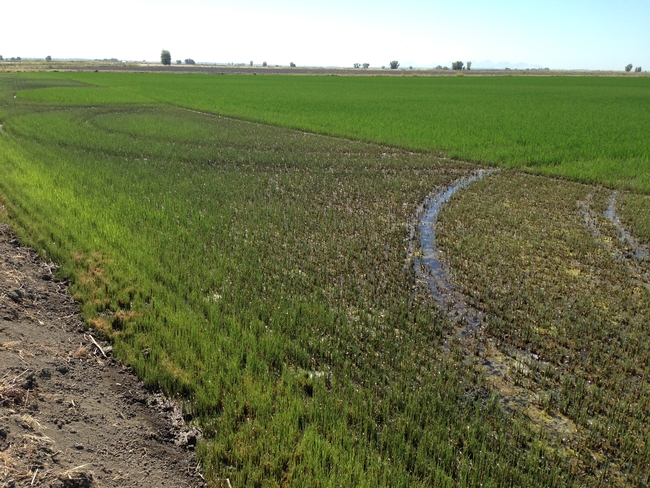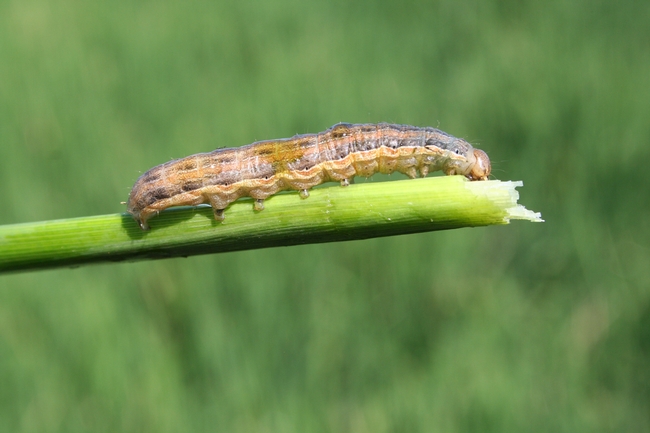
Posts Tagged: Luis Espino
Begone Tadpole Shrimps! They're 'Time Travelers' in Rice Fields
You may have never seen a tadpole shrimp, but you ought to be concerned about it, especially if you...
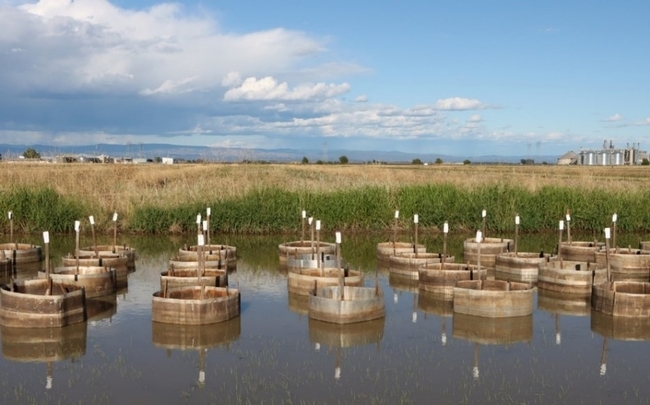
A field trial at the California Cooperative Rice Research Foundation Inc. Rice Experiment Station near Biggs, Calif. (Photo by Ian Grettenberger)
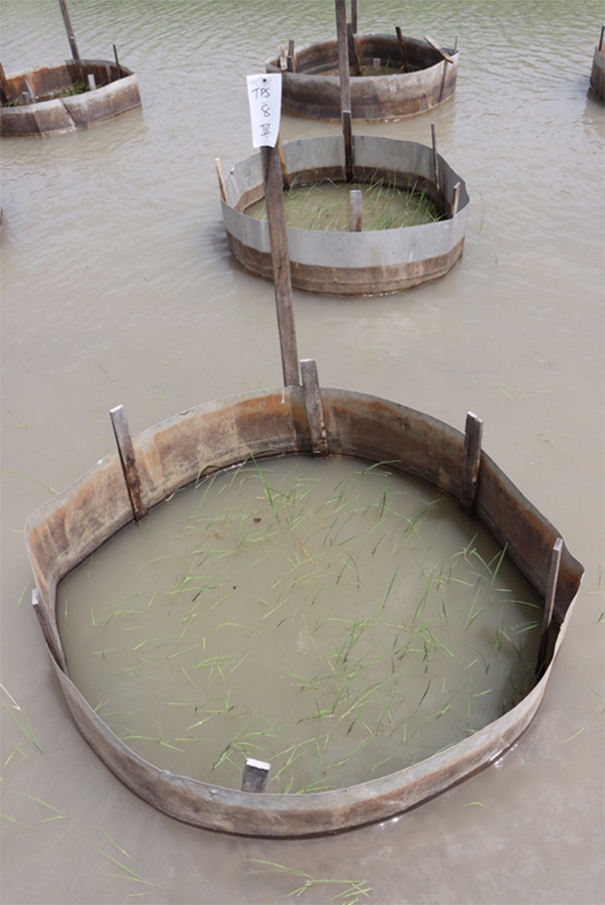
UC Cooperative Extension specialist Ian Grettenberg said that "we evaluated alternative management strategies that could be used to manage tadpole shrimp. We tested a number of materials using small metal ring plots and natural shrimp population. (Photo by Ian Grettenberger)
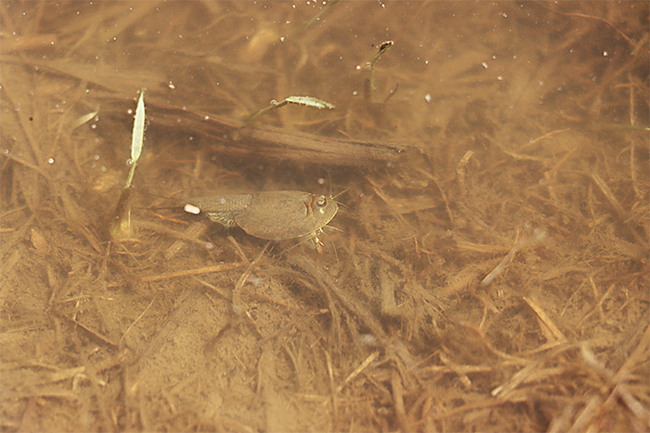
A tadpole shrimp feasting on rice seedlings. (Photo by Ian Grettenberger)
UCCE helps farmers protect rice crops from armyworm
Rice farmers are encouraged to monitor vigilantly for a rise in yield-reducing armyworms, reported Jake Abbott in the Appeal-Democrat.
UC Cooperative Extension rice advisor Luis Espino said the most recent numbers were low but are expected to climb in the next few weeks. The pest can quickly devour rice foliage down to the water level. The crop may recover, but armyworm presence can lead to yield reduction.
“I've heard numerous stories where growers were used to some defoliation and would go on vacation, and after the weekend they'd come back and see full defoliation," Espino said.
Espino and his team set traps at 15 locations across the valley to monitor pest populations weekly. The pheromone traps are small buckets that attract male moths. They take the information collected from the traps and notify farmers on whether or not they should begin examining their own fields for the presence of armyworms.
“We usually start to see numbers increase around mid-June and peak in late June or early July,” Espino said. “Right now, numbers are very low but they will come up. Over the years, we've learned that once we see the moth population peak, we see a peak of the worm population a week later. Once we start seeing those go up, we begin letting growers know to check their fields.”
Monitoring armyworms in rice helps reduce damage
Armyworms can be a serious pest in rice. The worms can eat the rice foliate or panicles, and cause yield reductions.
In 2015, a severe outbreak of armyworms caught rice growers by surprise, resulting in yield losses. In a 2018 survey conducted by UC Cooperative Extension, rice growers reported average yield losses in 2015 ranging from 4% to 12%. Since UCCE began a monitoring program in 2016, rice losses to armyworms have been rare, according to Luis Espino, UC Cooperative Extension rice farming systems advisor in Butte and Glenn counties.
To safeguard the rice crop against the pests, UCCE began conducting areawide monitoring of armyworms in 2016 using pheromone traps that attract the moths as they fly around rice fields. The traps are set up in 15 locations of the Sacramento Valley, from Richvale to Knights Landing, and in three sites in the Delta, covering most of the rice production area of California. The traps were set up early in the season and checked weekly until fields are ready to harvest.
“Moth numbers are delivered to more than 1,500 growers and crop consultants weekly via email, so they have a warning system to know when populations are increasing and when to start scouting closely,” Espino said.
“Treatments are not always needed, but armyworm damage can occur quickly and monitoring needs to be increased during the periods of peak moth flight,” he said. During periods of peak flight, the UCCE advisors provide growers with information on how to decide if a treatment is needed.
The information from the armyworm monitoring network, together with efforts by the rice industry to register insecticides that are effective at controlling armyworms, has resulted in better control of armyworms and less yield losses.
“In 2017 and 2018, I'd say yield loss due to armyworms was rare, and probably only happened in a couple of cases,” Espino said. “It's hard to give you hard numbers, but I'd say in 2017 and 2018, yield losses have been reduced to a minimum.”
Rice planting proceeds despite drought
Water uncertainties delayed planting of the California rice crop, but it finally began the last week of April, reported Tim Hearden in Capital Press. The National Agricultural Statistics Service predicts 408,000 acres to be planted to rice in California in 2015.
“Planting is going full swing right now,” said Luis Espino, UC Agriculture and Natural Resources (UC ANR) rice crop advisor with UC Cooperative Extension in Colusa County. “With the water situation early on, everyone was expecting water deliveries to be a little late — the first week of May. Then it was actually delivered a little earlier than that.”
Planting is about two weeks ahead of schedule in Butte County, said Cass Mutters, a UC ANR CE rice farm advisor.
“This spring was unfortunately so dry and so warm that growers were out working their fields,” Mutters said. “As a result, the planting schedule is accelerated this year.”
Because water deliveries from the Sacramento and Feather rivers have been cut, some land that typically produces rice will be fallowed in 2015.
“It's hard to say how much, but my guess is it's going to be maybe 10 or 15 percent more than last year," Espino said. "Growers might not get surface water but might be able to pump here and there or get water from somewhere else. We'll see at the end what the actual acreage is.”
California rice growers reduce greenhouse gas emissions

Butler is participating in a pilot program funded by the Environmental Defense Fund. Though it’s too early to measure, he has seen promising signs from the project.
“We’ve had good results with yield and water conservation, which really was our goal,” says Butler. “We’re happy that greenhouse gases go down as a result of that, but they weren’t the initial reason why we do that.”
Of the global GHG accumulation for all sectors, 0.001 percent comes from California rice fields, according to data compiled by Luis Espino, UC Cooperative Extension rice farm advisor for Colusa County.
“It’s such a new issue I don’t think much has been done in that area,” says Espino. “Right now UC Davis is doing the research, doing the modeling, trying to understand what goes on in the soil.”
Cass Mutters, UC Cooperative Extension advisor for Butte County, noted that California rice growers realize that being environmentally sensitive is part of their responsibility. Since the 1980s, changes in irrigation management and other practices have led to a 98 percent reduction in pesticide residues entering public waterways from rice fields. Along with water quality, the rice industry supports an air quality monitoring network that enables the Air Resources Board to model how many acres can be burned without exceeding federal air quality standards.

